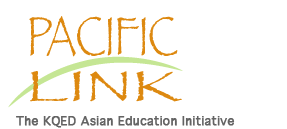In brief: What the world looked like 1850-1950
The century of transition from the mid-1800s to the end of World War II saw the rapid expansion, then subsequent end of European colonialism. By 1878, nearly the entire continent of Africa had been claimed by foreign powers. India finally succumbed to British rule in 1857, but successfully won its full independence by 1947. European commercial interests had carved up China into their own privileged trade zones, which pushed China's own imperial government into revolution. In the Middle East, the Ottoman Empire was already mired in many of the challenges that would soon characterize flash points for all political centers: constitutional democracy movements, ethnic nationalism, trade imbalances, and military clashes that would result in breakup.
The Americas were still largely open frontiers. Nonnative settler societies were growing and taking hold of the lands inhabited by indigenous populations, ultimately forming the nations that would represent these areas on the global stage. The United States struggled to hold onto its young union, fulfilled its declared "Manifest Destiny" and began to further its reach by going across the Pacific.
As the turn of the 20th Century arrived, Japan had risen to challenge the European world order and the United States was testing its own global reach. Ethnic nationalism, independence and constitutional democracy movements strained relations among the declared Great Powers, ultimately driving them to what became known as the First World War. Two reactionary trends resulted -- one leaning toward insularity and unilateralism, the other toward multilateral international cooperation. The clash of these reactions led to yet another world war and yet another reshaping of the world order.
Increased industrialization and advances in transportation technology fueled the global trade that complemented these political changes. The relationship of the periphery providing raw materials to feed the industrial centers continued and tightened, and was the chief economic rationale for global colonial empire. The increase in the transnational trade of goods also meant an increase in the rate at which people became factors in that trade -- whether as laborers being "traded" across borders, as brokers, investors, and employers who provided the demand for that labor supply, or as politicians and diplomats negotiating the foreign policies that would oversee these exchanges.





